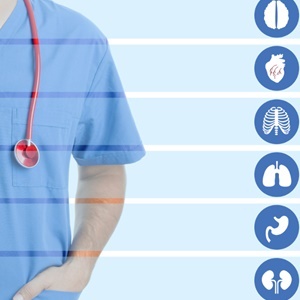
PMBs stand for Prescribed Minimum Benefits – a set of minimum health services all medical scheme members have access to. Here’s more about them.
Q. Why are PMBs in the news at the moment?
A. Some medical schemes feel that the requirement that PMBs be paid for at cost, essentially gives private doctors a blank cheque to charge what they want to. The high cost of covering PMBs for all members has been partly blamed for the spiralling cost of medical scheme membership – an issue the Minister of Health has constantly addressed.
Q. What exactly are PMBs?
A. This is a list of 270 medical conditions and 25 chronic conditions for which all schemes must pay, regardless of the option that the medical scheme member has chosen. State hospitals provide treatment for all these conditions as well, but medical scheme members can go to a private hospital (often a designated service provider) for treatment. Diagnosis, treatment and care for these conditions are rendered according to clinical protocols and criteria.
Q. Didn’t schemes always pay for these conditions?
A. No, the Medical Schemes Act of 1998 made it a requirement. Previously, schemes could refuse applications from members who were likely to be high claimers, and they could also exclude new members from treatment for previously existing conditions for unlimited periods of time.
Read: 20 claims medical schemes don’t have to pay for
Q. Can my medical scheme force me to use a designated service provider (DSP)?
A. No, it can’t. But if you choose not to use the DSP recommended by your scheme without having a good reason, you could be faced with a co-payment for the treatment of a PMB.
Q. If my GP is not a preferred provider, do I have to go to another doctor?
A. Only if you want to avoid making co-payments for your doctor’s visit. If you’re happy to stay where you are, and foot part of the bill, it is your right to do so.
Q. Am I still covered for all PMBs even if I just have a hospital plan?
A. Yes, you are covered for the treatment of all 270 conditions if the treatment takes place in a hospital. You are also covered for the diagnosis and treatment of the 25 chronic conditions. So if you have one of the 25 listed chronic conditions, your hospital plan will cover your chronic medication (once you have registered the chronic condition with your scheme), as well as 6-monthly GP visits to renew your prescriptions.
Q. Can my scheme require me to make co-payments for treatment of non-PMBs?
A. Yes, they can, especially if you choose to have treatment at a non-DSP. Schemes have set tariffs they will pay for certain consultations and treatments, and if you use medical services that charge more, you will be liable for the difference. The scheme usually has preferred providers, many of whom undertake to charge medical scheme rates, cutting out the possibility of large co-payments.
Q. When is it justified for a member to get treatment at a non-DSP?
A. If the DSP cannot provide the required treatment, or cannot do so within a reasonable period of time; when there is a medical emergency requiring immediate treatment, and there is no DSP within reasonable distance.
Q. Where can I get a list of the 270 PMBs?
A. On request, your scheme should provide you with this information. They can also give you a list of the 25 chronic conditions for which they have to cover diagnosis and treatment.
Q. Can my scheme name a state hospital as a DSP for the treatment of certain PMBs?
A. Yes, they can, but only if the member has reasonable access to such facilities and doctors. This must be clearly indicated in the benefit schedule of the medical scheme option. Certain low-cost hospital plans do this, but higher-end comprehensive schemes tend not to, as access to private hospital care is what motivates many members to join a medical scheme in the first place.
Q. Am I covered for PMBs if I have a hospital cash-back plan?
A. No. Medical insurance products are not governed by the regulations of the Medical Schemes Act and do not pay for treatment, diagnosis and care – rather they pay your for time spent in hospital.
Q. What happens if the treatment for a PMB exceeds my annual overall limit?
A. The scheme will continue paying if it is one of the listed PMBs, even if it exceeds the overall annual limit set by your scheme. All high-cost cases are monitored by schemes to ensure that the continued treatment is necessary and appropriate according to clinical protocols. This is also done to protect the interests of other members, as the continued funding of high-cost cases could have an impact on the scheme’s reserves. Few schemes will pay for experimental treatment with uncertain outcomes.
Q. Where do I complain if I feel that my scheme is not sticking to the regulations on PMBs?
A. You can lodge a complaint with the Council for Medical Schemes, which governs the medical scheme industry. Here is more information on how the complaints procedure works.
Read more:
What to consider when changing your medical scheme




 Publications
Publications
 Partners
Partners










